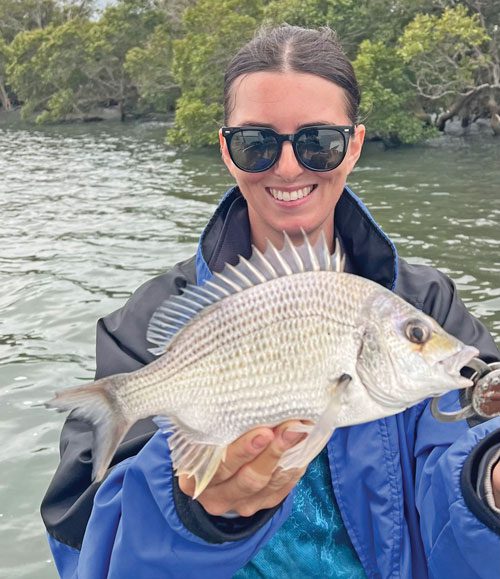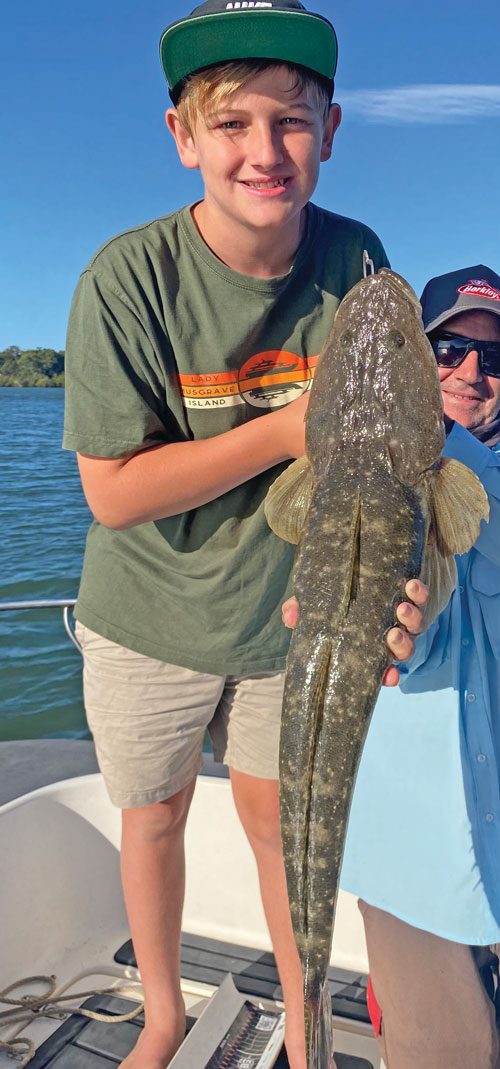I was having a chat with an assistant in a tackle shop the other day and he asked me how the fishing was going.
I told him about a few of our recent captures and he said, “Wow, I wish I could get some fish like that, as they are better than my personal bests.”
Obviously, he asked me where I’d caught the fish.
My reply was that most of the fish were caught within sight of the boat ramp.

I also said that it wouldn’t matter if I gave the exact position because if you didn’t know the size of the tide I was targeting those fish on, what phase of the tide, what technique I used,
what colour and type of lure was used, you probably wouldn’t have much luck.
All of those things and more contribute to the possibility of catching these fish in that particular area.
I could see he was getting a little disheartened – he said he sees articles, pictures and social media of a number of people catching good quality fish all the time.
I explained to him that the reason certain anglers catch fish on a regular basis was because they know the key elements for a particular spot and will predominantly try to go fishing in these areas for certain species when everything lines up.

Even if you go to these places when the essentials don’t align, most of the time you’ll catch undersized fish, undesirable fish or no fish at all.
So, after our chat, here’s some information which may help – at least if you know the conditions and gear are right, you can have a try… or concentrate on experimenting with and learning the things you don’t know yet, if that makes sense.
Trying to convey certain things in an article can be tricky, but I’ll do my best.
Remember, these are the techniques that work for me in my area and, as I’ve said before, there are many methods and theories out there – find what works for you.
I’ll concentrate on approaches for catching two species that will be prominent over the cooler months – bream and flathead.

Bream
Let’s start with the humble bream, and I’m not talking about catching an accidental bream on a bit of bait.
I’m talking about targeting them so that you can catch heaps of them, whether it’s for sport or to take a feed home.
Targeting with a lure
Most of the time you’d target these fish near structure such as a rock wall, jetty or even moored boats.
Places with more bream than anywhere else in my area are around mangrove lines and out on mud flats.
To fish them correctly, on a high tide, try near the mangrove line and at low tide, fish at the bottom of the mud flats.
Things you’ll want to look for are where the bait congregate.
Most of the time, bait will gather on the end of an island, up against the mangrove line – of course, this will depend on which way the tide is flowing.
So, I tend to be at the top or bottom of an island on an incoming or outgoing tide.

On a low tide, look for areas where the last of the water will drain off a bank, such as the bottom of a drain.
Usually on low tide, you should be able to drive over them and pick the fish up on the sounder quite easily – if they’re there.
My preference is to use a 2-4kg graphite rod with a 2500 spin reel spooled with 6lb braid and an 8lb leader.
And my lure of choice for casting at schools of fish on a high or low tide is the Zerek Bulldog Crank.
The retrieve is a simple stop start or a simple slow continuous wind back to the boat.
If casting isn’t your thing, use the same crank bait and troll against the mangrove line or along the bottom of mud flats on a low tide.
Targeting with bait
If using bait, work out where the fish are sitting, then position your boat correctly and anchor up.
A good berley trail will help, along with nice fresh bait – this can be anything from pilchard, squid or mullet gut or, one of my favourites, chicken breast!
A little hint…
 Bush 'n Beach Fishing Magazine Location reports & tips for fishing, boating, camping, kayaking, 4WDing in Queensland and Northern NSW
Bush 'n Beach Fishing Magazine Location reports & tips for fishing, boating, camping, kayaking, 4WDing in Queensland and Northern NSW








